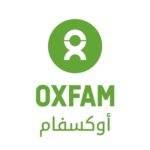Assessment of the Impact of the Syrian Conflict on Access to Water
Background:
Inequality in access to essential services, particularly clean water, played a significant role in the complex factors that contributed to the Syrian uprising. While water scarcity was not the primary cause, it compounded socio-economic challenges such as the reduction of government subsidies, a shift towards economic liberalization, corruption, and political capture, leading to high levels of inequality and poverty. A devastating drought that began in 2006 exacerbated these challenges, resulting in crop failures and restricted water supplies. This forced many to leave rural areas for urban centers, contributing to social tensions.
As the Syrian conflict persisted, concerns grew that essential services, including those provided through humanitarian assistance, were being weaponized by various parties, including the Government of Syria and non-state armed groups. This manipulation of services is used to advance military objectives, pressure communities, and gain political leverage. Damage to infrastructure, unequal resource distribution, inadequate maintenance, and supply chain manipulation significantly reduced access to safe water, dropping it to just 50% of pre-crisis levels.
Reports and anecdotal evidence indicate deliberate targeting and misuse of water resources, resulting in cuts, denial of access, and discriminatory practices. However, a comprehensive assessment of the immediate and long-term impact of these actions is missing from the current discourse. This research project aims to fill this gap by exploring how the Syrian conflict has affected access to water, with a specific focus on how water is employed as a weapon by various conflict parties.
Oxfam, as the largest Water, Sanitation, and Hygiene (WASH) international non-governmental organization (INGO) operating in Syria, is well-positioned to influence the public debate surrounding the use and misuse of water during the conflict. This research project seeks to raise awareness among policymakers and other stakeholders at global, regional, and local levels about the urgent need to ensure safe access to drinking water for civilians and to encourage parties to the conflict to adhere to international humanitarian and human rights frameworks. It also aims to initiate a collective database on the use of water as a weapon and advocate for systematic documentation of water-related violations by the WASH cluster, addressing a current gap in humanitarian efforts inside Syria.
Triangle’s Assessment:
- Data Collection and Stakeholder Engagement: The research team conducted extensive data collection activities, which included surveys, interviews, and focus group discussions. These efforts engaged key stakeholders, including local communities, humanitarian actors, and government officials. This phase involved gathering both qualitative and quantitative data to provide a comprehensive view of the access constraints.
- Assessment of Access Constraints: Using the collected data, the assessment meticulously analyzed the primary access constraints faced by humanitarian organizations operating in the conflict zone. This encompassed a range of factors, from security and logistical challenges to bureaucratic impediments and infrastructure limitations.
- Identification of Humanitarian Gaps: The research project identified critical gaps in the humanitarian response within the conflict-affected region. These gaps encompassed areas such as healthcare, food distribution, shelter, and clean water provision. The assessment sought to understand the consequences of these gaps on the affected population.
- Recommendations and Mitigation Strategies: Based on the findings, the assessment provided a set of well-informed recommendations and mitigation strategies. These recommendations were tailored to address the specific access constraints and humanitarian gaps identified during the research. They aimed to guide humanitarian organizations in improving their operational effectiveness and reach.
- Report Compilation and Presentation: Subsequently, the research team compiled a comprehensive report summarizing the entire assessment process, from data collection to recommendations. The report was presented to relevant stakeholders, including humanitarian agencies, donors, and local authorities, to facilitate informed decision-making and collaboration.
- Monitoring and Evaluation: Following the presentation of the assessment report, a monitoring and evaluation phase was initiated to track the implementation of the recommended mitigation strategies and assess their impact on improving humanitarian access in the conflict-affected region. This phase involved regular follow-ups and data analysis.
- Adaptation and Future Planning: Based on the insights gained from the assessment and subsequent monitoring and evaluation efforts, humanitarian organizations adjusted their strategies and plans for future operations in the region. This iterative process aimed to enhance the overall effectiveness of humanitarian assistance in the challenging context.
- Documentation and Knowledge Sharing: The findings, recommendations, and lessons learned from the Triangle’s Assessment were documented and shared within the humanitarian community. This knowledge sharing facilitated cross-learning among organizations facing similar access challenges in conflict zones, contributing to improved practices and responses
Project:
Assessment of the Impact of the Syrian Conflict on Access to Water

Duration:
January 2017-May 2017
Lebanon
